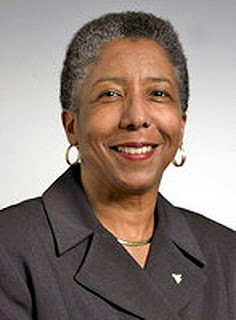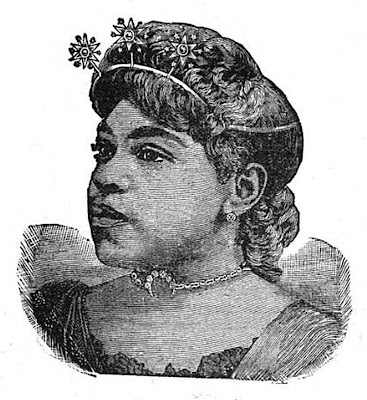WASHINGTON – Deliberate discrimination against job seekers based on their race, sex, age, national origin or other prohibited basis remains a major national problem, a battery of experts told the U.S. Equal Employment Opportunity Commission (EEOC) at a Commission meeting today.
“Intentional discrimination in hiring remains a significant problem,” said EEOC Chair Jacqueline A. Berrien. “The EEOC will continue to address this problem through enhanced education and outreach and through vigorous enforcement of the law.”
At the start of the meeting, EEOC General Counsel P. David Lopez recounted a hiring case he litigated against WalMart when he was an EEOC trial attorney in Phoenix. The case arose out of a charge by two deaf applicants who were expressly denied by the company because they were deaf. As part of a negotiated settlement, the company aired a commercial on Arizona television stations featuring the two, telling viewers in sign language, with a voiceover, their story and educating the public about the nation’s equal employment laws. A video of that commercial was shown at the meeting.
“Unfortunately, discriminatory hiring practices such as conformity to discriminatory customer preferences, employing prohibited stereotypes about jobs, and targeted recruitment procedures aimed at only attracting certain racial or national origin group member applicants, continue to exist,” Lopez said. “Where necessary, the EEOC will use litigation to stamp out these practices and provide relief to the victims of discrimination.”
Bill Lann Lee, a former U.S. Assistant Attorney General for Civil Rights, called on the EEOC to combat hiring discrimination as part of its systemic initiative. “Systemic discrimination in hiring today is particularly disheartening to communities where joblessness has put the American Dream on hold,” he said. “Hiring discrimination is a fundamental problem; it often denies more than one employment opportunity, cutting off future opportunities as well. It is impossible to climb the rungs of a ladder if an individual cannot get a foot on the first rung.”
Katherine Kores, the EEOC’s Memphis district director, told the Commission that “hiring cases can be extraordinarily difficult to identify and investigate.” Because applicants often have no information about who was hired, or the composition of the employer’s workforce, she said, they do not realize that they have been the victims of hiring discrimination.
Other EEOC officials cited recent agency lawsuits. Kate Boehringer, a supervisory trial attorney in the Baltimore Field Office, detailed the EEOC’s suit against Area Temps, a northeast Ohio temporary labor agency, which agreed to pay $650,000 in July 2010 for its systematic practice of considering and assigning (or rejecting) job applicants by race, sex, Hispanic national origin and age. The EEOC said that Area Temps used code words to describe its clients and applicants for discriminatory purposes, such as “chocolate cupcake” for young African American women, “hockey player” for young white males, “figure skater” for white females, “basketball player” for black males, and “small hands” for women in general.
Ana Lopez-Rodriguez, who worked for Area Temps, told the Commission that the company fired her for refusing to help it conceal evidence from the EEOC. Lopez-Rodriguez said she had left demographically coded cards, which the company used to discriminate, in her Rolodex, instead of cooperating with the company’s request to destroy them prior to the EEOC investigator’s visit.
In November 2010, Scrub, Inc., which provides janitorial services to Chicago’s O’Hare Airport, agreed to pay $3 million after the EEOC sued the company for failing to recruit and hire African-Americans. Diane Smason, an EEOC supervisory trial attorney in Chicago who handled the Scrub case, said an economist’s report showed that “the statistical disparity in hiring rates between African-American applicants and non-African-American applicants was so high that there is effectively zero probability that Scrub’s failure to hire African-Americans occurred by chance.”
Jeanette Wilkins, one of the African-American discrimination victims in the Scrub case, told the panel how she tried to apply for a job at Scrub. Despite janitorial experience and 15 advertised openings, she said she was told she would be contacted if the company was interested. By contrast, a Hispanic woman who applied at the same time was asked to stay for an interview. Ms. Wilkins said an African-American friend “went to Scrub’s office later that same day. She told me that she had a similar experience. The receptionist took her application and told her that someone would call her if Scrub was interested in her. While she was there, there were four Hispanic women and one Hispanic man filling out applications. All five of the other applicants were asked to stay for an interview,” but she was not.
Rae T. Vann, general counsel of the Equal Employment Advisory Council, an organization of major employers, stressed the need to train staff involved in the hiring process. She urged the EEOC to update a 1998 “Best Practices” manual for employers to give more real-life examples from private companies. But she also cautioned the EEOC to allow flexibility in requiring employer training, rather than imposing a one-size-fits-all approach on a range of employers, to prevent hiring discrimination.
The Commission will hold open the June 22 Commission meeting record for 15 days, and invites audience members, as well as other members of the public, to submit written comments on any issues or matters discussed at the meeting. Public comments may be mailed to Commission Meeting, EEOC Executive Officer, 131 M Street, N.E., Washington, D.C. 20507, or emailed to Commissionmeetingcomments@eeoc.gov. All comments received will be made available to members of the Commission and to Commission staff working on the matters discussed at the meeting. Comments will also be placed in the EEOC library for public review.
The EEOC enforces federal laws prohibiting employment discrimination. More information is available at www.eeoc.gov. Information about this meeting, including witness statements and biographies, is available at www.eeoc.gov/eeoc/meetings/6-22-11/.
































